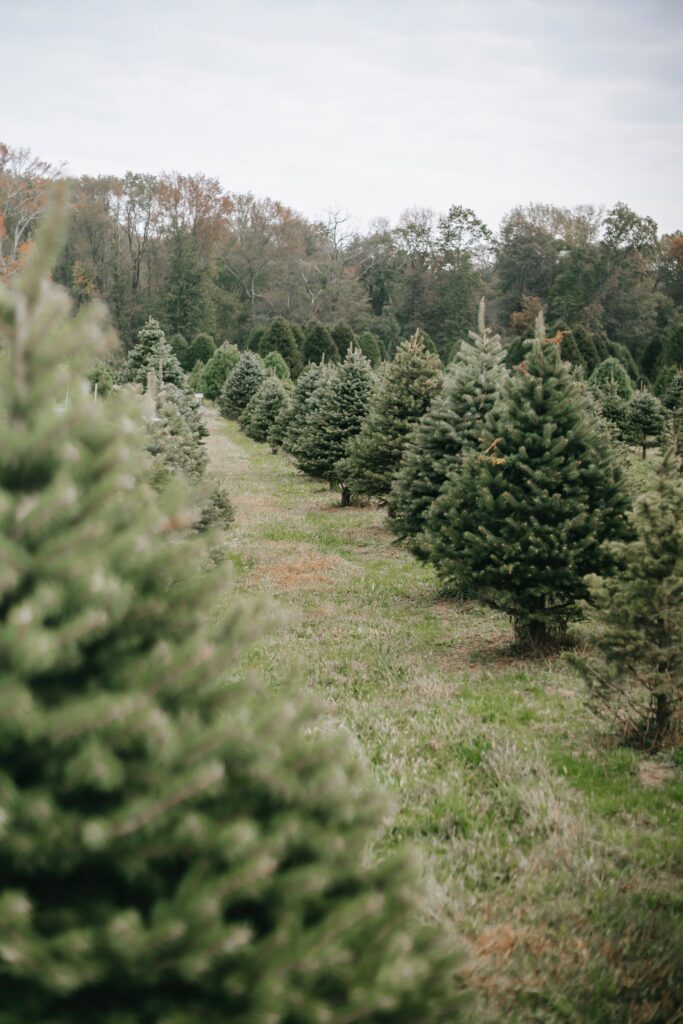Christmas Trees: Past, Present, & Future

A little over 3 hours north of our Greenville, SC headquarters lies Ashe County, NC, the largest Christmas tree-producing county in the United States. In fact, North Carolina trails only Oregon in overall Christmas tree production nationally (the top producing states are Oregon, North Carolina, Michigan, Pennsylvania, Wisconsin, and Washington).
That’s great and all, but ‘what does that have to do with STEM’ you might ask? It just so happens that North Carolina State University (NC State) is leading innovative research tied to Christmas tree growing.
Before we dive into the future, let’s take a moment to look at both the past and present.
A Branch from the Past: The History of Christmas Trees
It all began in 16th-century Latvia, where the first recorded decorated Christmas tree appeared. Artificial roses adorned the tree, symbolizing the Virgin Mary. This tradition blossomed across Europe, with Germany popularizing the use of apples and other ornaments in the 1600s. Fast forward to the 1700s in France, where the idea of lighting up trees with candles emerged.
The Christmas tree rooted itself in American culture through German settlers in the 1800s, evolving from tabletop to floor-to-ceiling grandeur. Commercial sales of trees in the U.S. started in 1851, and by the 1900s, concerns about overharvesting led to the birth of the first Christmas Tree farm in New Jersey.
Today’s Tannenbaum: The Current State of Christmas Trees
Today, the U.S. sees about 25-30 million real Christmas trees sold annually, with a staggering 350 million trees growing on farms throughout all 50 states. On average, a tree is grown 7 years before being harvested, but it can take between 4 and 15 years for a tree to reach what is considered to be a typical height (6-7 feet).
North Carolina stands tall as a major producer, particularly of the Fraser fir, which occupies about 40,000 acres in the state and has been chosen for the White House Christmas tree 14 times.
NC State’s Christmas Tree Genetics Program: The Future of Festive Firs
At the heart of Christmas tree research is NC State’s Whitehill Lab. There, a blend of genetic, genomic, and molecular biology is applied to address the Christmas tree industry’s challenges. With climate change and globalization threatening tree resources, the lab’s work is more crucial than ever. They are on a mission to produce trees better suited to withstand environmental threats and to meet consumer desires.
One of their primary goals is discovering genes, mechanisms, and novel genotypes in Christmas tree species. The lab’s research delves into the natural defense mechanisms of conifers, exploring their genetic basis to enhance resilience and resistance. This understanding is vital in mitigating pressures from pests, pathogens, and climate change. It’s a pioneering effort in using genomic technologies to unravel the genetic underpinnings of tree defense systems.
The Quest for the Perfect Christmas Tree
NC State’s research is not just about survival; it’s about perfection. For over 40 years, the university’s Christmas Tree Genetics Program has been dedicated to improving the qualities of Fraser fir trees – the crown jewel of Christmas trees in the U.S. and a North Carolina native. The program aims to enhance traits like needle retention, aroma, and shape to create the ideal Christmas tree.
There is special emphasis applied to needle retention, a crucial trait for maintaining tree quality throughout the holiday season. The goal is ambitious: reduce needle loss after harvest to just 1%, a significant improvement from the current 30%. This improvement is possible thanks to the identification of 25 elite Fraser fir trees selected for their superior traits from an initial pool of 30-40,000. These elite trees are the basis of a genetic improvement program that promises to deliver genetically enhanced seeds to growers by 2028.
Adapting to Climate Change: A Priority for Christmas Tree Research
Another key aspect of NC State’s work is understanding how climate change affects Christmas tree production. Naturally found at high elevations in the Appalachian mountains, Fraser firs are particularly vulnerable to changing climates. As temperatures rise and winter conditions alter, the natural habitat for these trees shrinks. NC State researchers are not only improving the trees’ resilience to climate change but also studying the impact of increasing pest populations due to warmer temperatures. This comprehensive approach is essential for helping growers adapt and continue to thrive in a changing environment.
Wrapping Up: NC State’s Gift to Christmas Trees
NC State’s innovative research is not just a boon for the Christmas tree industry; it’s a gift to all who cherish this festive tradition. By enhancing the resilience, beauty, and longevity of Christmas trees, NC State ensures that this beloved holiday symbol continues to thrive for generations to come.
So, as we celebrate this season, let’s acknowledge the science and effort behind our beautifully adorned trees. Thanks to NC State, the future of Christmas trees is not just bright; it’s scientifically brilliant!
